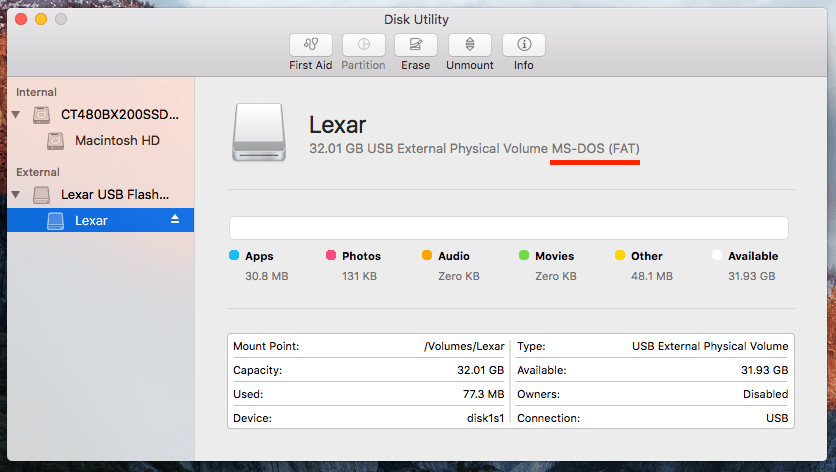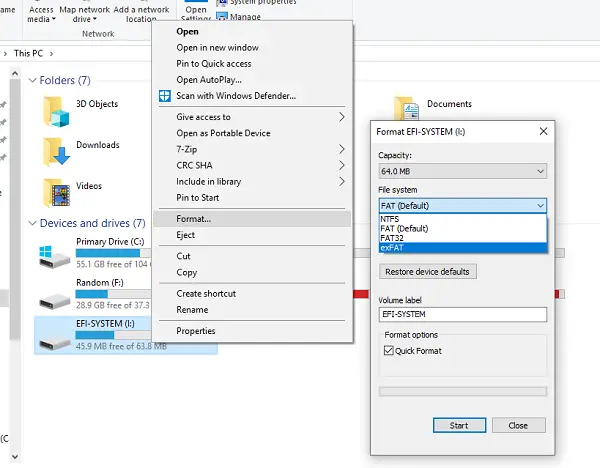- How To Format G Drive For Windows And Mac
- How To Format G Drive For Mac Into Exfat Windows 7
- How To Reformat G Drive For Mac
- How To Format G Drive For Mac
Hi, I have a 10TB G-Drive USB (not USB-C) harddisk and I have formatted it to ExFAT via a Window 7 PC. It works fine with the PC. I later on bought a new mac book pro with touch bar with macOS High Sierra 10.13.3, and found out that the G-drive is not mountable by the mac book. I can find the hark disk in disk utility with the correct name but the harddisk name is greyed and do not allow me to. This is an excellent, step-by-step guide to formatting your external drives using ExFAT. When you format an external drive using ExFAT it can be recognized and used by both Windows and Mac IOS machines.
ExFAT is basically an extension of FAT that allows for larger file sizes to be written and more. Note that ExFAT is only compatible with versions of Windows later than Vista. OS X Extended is Mac’s native drive format. Your internal Macintosh drive is also formatted in this format. If you want to transfer files from a Mac to Windows PC and vice versa using an external portable hard drive then you have to have the external drive formatte.
Manuel Manev wrote:

Hi, so I have a flash drive and I want to formate it into exFAT/NTFS. I go and do everything, but then I got MS-DOS (FAT). Also I do not have option for NTFS. I apply 2 screenshots so that to see what is happening here...
I can't say if that's the internal logic in Disk Utility at work, but since the main benefit of exFAT over FAT is the ability to save files larger than 4GB, and the flash drive you're working on is only 4GB in size, there's no reason not to just leave it as FAT. Moreover, Disk Utility is known to have problems with exFAT formatting (the recommendation is to do it on a Windows PC), so you're better off as is. Finally, the Mac OS can read but not write to NTFS drives so being able to format a drive as NTFS would be counter-productive.
Apr 7, 2015 9:03 AM
Most external hard drives are designed to work for Windows computers. So if you’re trying to connect an external hard drive to a Mac, you might have to format the drive before you can use it. Here’s how to do that:

How to Format a Hard Drive for Mac

Note: If you already used your external hard drive on a PC, be sure to back up any files on it. Formatting your drive will wipe out all the data in it.
- Connect an external hard drive to your Mac. Some external hard drives need to be plugged into an outlet to work.
- Go to Spotlight Search, type in Disk Utility, and click the first option. This will open the Disk Utility app, where you will find all the internal and external drives that are connected to your Mac.
- Then click View in the top-left corner of the window and select Show All Devices.
- Click the external hard drive you want to format. You can find this on the left-hand side of the screen under External Hard Drives. For the best result, select the disk (the highest option in the external tree).
- On the top menu, click Erase. This will open a small pop-up window with a warning that erasing the drive will delete all data stored on it and that it can’t be undone.
- Choose a name, format, and scheme for your drive. You can choose whatever name you want, and you should choose GUID Partition Map for the Scheme in most cases. However, you can choose between the following formats:
- Mac OS Extended (Journaled) is the best option for most Mac users since it is compatible with all Macs.
- APFS (Apple File System) is only for newer Macs running macOS 10.13 or later.
- exFAT is compatible with both PC and Mac.
- MS-DOS (FAT) is also compatible with Mac and PC, but you can only transfer files smaller than 4GB.
- When you’re done with providing the setup details, click Erase. This will immediately wipe the entire drive.
If you get an error message that states, “Erase process has failed. Click done tocontinue,” don’t freak out about it. This is an issue caused by Time Machine running on your externaldrive.
You will need to turn off Time Machine. You can do this by opening System Preferences and unchecking the boxnext to “Back Up Automatically”.Then click Options beside “ShowTime Machine in menu bar.” This will open another window. Click Cancel and it will turn off the Time Machine.
After you turn off the Time Machine, redo steps 4 to 6.
How to Partition anExternal Hard Drive on Mac
If you have formattedyour drive, you can then partition the drive, which will splitthe drive into two formats. This is perfect for anyone who uses Macs and PCsand wants to transfer files between the different operating systems with anexternal drive. Here’s how to do that:
- Open Disk Utility and select the drive that you want to partition. It is best to click View > Show All Devices so you can selectthe disk rather than a container.
- In the top menu, select Partition.
- Then click the plus sign at the bottom of the pie chart. Every time you click this plus sign, a new partition will becreated.
- Choose a name, format and size for each partition. You can also change the size of each of the partitions bydragging the white dots at the edge of the circle.
- Finally click Apply.
Why Partition a Hard Drive?
Partitioning an external hard drive allows youto have separate drives for Mac, PC, and any other operating system. Now youdon’t have to go out and buy hard drives for every computer you use.
How To Format G Drive For Windows And Mac
A partition also gives you a dedicated space foryour Time Machine back-up files or a bootable backup of your operating system.It also helps protect your data if your drive gets infected with malware, as itwould be contained within one of the partitions.
How To Format G Drive For Mac Into Exfat Windows 7
Now that you know how to format an external drive for Mac, check out our blog on the difference between an HDD and an SDD.